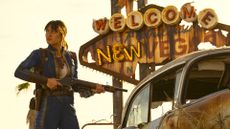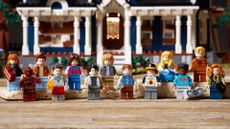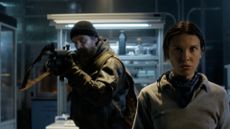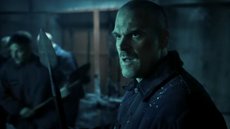Entertainment
The latest Entertainment breaking news, comment, reviews and features from the experts at T3
-

Sci-fi fans get an early surprise – Amazon brings Fallout Season Two forward to TODAY
The most eagerly-awaited sci-fi series in streaming history arrives early
By Rik Henderson Published
-

Got a Switch 2 or know someone with one? These accessories would make great Christmas gifts
A good accessory can change everything
By Max Freeman-Mills Published
-

The Night Manager S2 gets a sizzling trailer, with dates confirmed for this thriller's return
Returning John La Carré series gets an official trailer - and will be free for some viewers
By Chris Hall Published
-

Netflix drops spine-tingling trailer for Paul vs Joshua showcase this week
The countdown is on to one of the most controversial sporting events of the year
By Chris Hall Published
-

Knives Out 3 is now on Netflix and set to dominate December streaming
Daniel Craig returns, along with the accent, and cast like you won't believe
By Chris Hall Published
-

These are the three gaming headsets I recommend this Christmas – ideal for gifts
These are the best of the best
By Max Freeman-Mills Published
-

Netflix to lose one of the greatest movie franchises of all time - and it's a must-watch in December
It could make for a magical Christmas binge
By Chris Hall Published
-

Netflix finally puts a date on the Peaky Blinders movie for cinema and home viewing
By order of the Peaky Blinders
By Chris Hall Published
-

This 4K Blu-ray just confirmed something I never realised about streaming
Even the most vintage movies shine on disc
By Max Freeman-Mills Published
-

Guy Ritchie continues quest to be the streaming king – this time on Amazon Prime Video
Heads back to one of his classic franchises for a new TV series
By Rik Henderson Published
-

Spotify continues to evolve – starts to rollout music videos to a select few
It's taking a leaf from the YouTube Music book
By Sam Cross Published
-

Prime Video's most profane show is back next year – but I just have one big question
The Boys ends in 2026
By Max Freeman-Mills Published
-

Netflix vows to keep Ted Lasso on Apple TV if it buys Warner
But Paramount might have other plans, of course
By Rik Henderson Published
-

First look at Apple's Formula 1 coverage shows a slick design for the 2026 season
The new season is going to look great on Apple TV
By Sam Cross Published
-

I finally switched from Spotify – my chosen alternative isn't what you'd think
Is there a better value offering in the modern music streaming arena?
By Sam Cross Published
-

HBO's newest Game of Thrones spinoff gets a trailer that shows why Netflix wants to buy it
A Knight of the Seven Kingdoms looms
By Max Freeman-Mills Published
-

Forget Stranger Things – this is the other current Netflix number 1 you should check out
'Tis the season, after all
By Max Freeman-Mills Published
-

25 best movies of 2025 – on Apple TV, Netflix, Amazon, Disney+ and Now
Here are the best films of the year, available on streaming services to watch right now
By Brian Comber Published
-

I missed this trailer for the HBO show we should all be watching
You might have too
By Max Freeman-Mills Published
-

Alexa Plus has a genuine use case that'll keep movie fans happy
This AI-powered feature is perfect for mind-blank moments
By Sam Cross Published
-

YouTube's latest feature could have you rethinking your life choices
Just how much time do you spend watching cat videos?
By Chris Hall Published
-

Samsung TVs just got Amazon Prime's best show for free
Fallout's first season is yours for December
By Max Freeman-Mills Published
-

Has there ever been a more streaming-era Lego set than this upcoming beauty?
Stranger Things comes in bricks, now
By Max Freeman-Mills Published
-

How to watch The Ashes 2025/26 – Australia vs England test matches
Eyes turn to Brisbane after England's opening Test match defeat
By Jacob Jones Last updated
-

Netflix to lose a major show next year – and fans aren't happy about it
One of the most popular shows ever made is leaving Netflix
By Rik Henderson Published
-

If you just noticed this missing Netflix feature – yeah, it really has gone for good
Netflix has stealthily deleted a feature you might have used in the past
By Britta O'Boyle Published
-

Last chance for the best Cyber Monday streaming deals from 99p – Apple TV, Paramount Plus, Now, Prime Video, and more
You only have a few hours to secure your 2026 streaming for a lot less
By Rik Henderson Published
-

Netflix in December 2025: Five unmissable additions coming this month
It's another huge month in streaming
By Max Freeman-Mills Published
-

I never knew Netflix's shop existed – now I want all this Stranger Things merch
How've I had my head in the sand (or Upside Down) for this long?
By Mike Lowe Published
